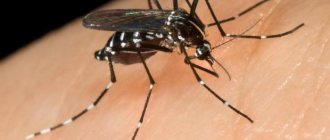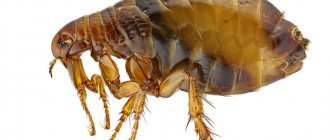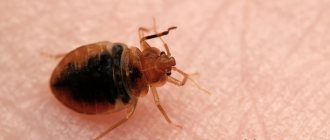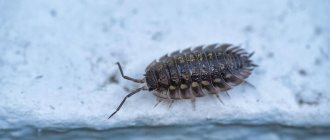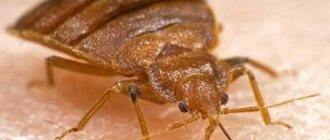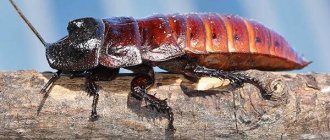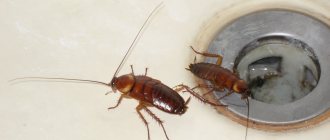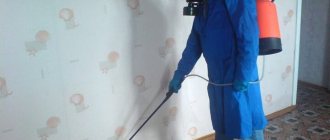Summer prompts us to ask this question again and again - where do mosquitoes come from? Only if you really try to answer it can you ensure a comfortable stay on your territory.
Are you forced to endure annoying squeakers in the garden, dreaming that their number will decrease? Let's start with biology, where mosquitoes even come from. The short answer is where water is present in varying quantities.
Aquatic lifestyle
“Not everywhere where there is water, there are mosquitoes, but where there are mosquitoes, there is water” - Goethe spoke about frogs, but the essence of his statement also applies to those they feed on.
Mosquitoes need moisture for a reason. By biting a warm-blooded animal, a female mosquito receives along with the blood a special protein necessary for the formation of an embryo. Then it is important for her to find water in which to lay her eggs, since the larvae will not grow without it.
To completely defeat mosquitoes, you need to interrupt their life cycle. In general, these insects do not live long. In total, they have 4 stages of development (egg, larva, pupa, adult), the first three of which take place under water. The transformation process takes no more than a week.
Therefore, if there are a lot of mosquitoes and this continues from year to year, this is the result of the continuous regeneration of their community right on your site. Take the life of the next generation and you can stop the “invasion.”
Observing populations of midges, entomologists have established two important facts:
1. Throughout their life, mosquitoes do not fly further than 30 meters from water.
And
2. For the larva to develop into a mosquito, a puddle only 2.5 cm deep is enough!
Since the larvae only grow in moist environments, the obvious way to stop hatching is to eliminate the standing water where the mosquitoes come from. William Blake spoke clearly about water in which there is no movement: “Beware of stagnant water: poison lurks in it.”
Many people don't give stagnant moisture any serious attention because they don't connect it with where mosquitoes come from. But she, in fact, makes future mosquitoes.
This is what mosquito larvae look like in a garden bucket from which you forgot to drain the water.
What mosquito larvae look like in stagnant water - video
Scoops and buckets are not the only place on your property where a new generation of mosquitoes can grow. Let's look at all the others, trying not to miss anything.
Life cycle of a mosquito
The insect goes through several stages of development.
- egg;
- larva;
- chrysalis;
- imago or adult individual.
In the wild, the female lays eggs in stagnant bodies of water. At temperatures within 20 degrees Celsius, the larva appears within a few hours. Outwardly it looks like a gray worm. Initially, the body size does not exceed 2 mm. Lives in water, feeds by filtration on simple microorganisms. It passes through itself up to 1 liter of water per day.
On a note!
Over the course of 14 days, mosquito larvae actively develop, undergo several molts, and increase to a size of 4 mm. At the last stage, pupation occurs. The pupa is extremely active, capable of diving to a depth of 1 m. The structure of the body resembles a comma; complex processes take place inside to transform the larva into an adult. After 3-7 days, an adult mosquito begins to emerge.
The cover bursts, the head is shown, then the chest, abdomen, and paws. The process of emergence was recorded by scientists on camera, and you can watch the video. The males always appear first. They gather on the grass around the pond, waiting for females. For several weeks, the young generation leads a carefree lifestyle, feeds on nectar, and does not annoy anyone with bites. Then mating begins.
How to fight
It is unlikely that any of us will tolerate such an unpleasant neighborhood, even with a small number of them in the cold season. In order to get rid of uninvited guests, various means are used: from innovative methods to folk remedies.
For protection at any time of the year, fumigators, anti-mosquito coils, special traps, and sprays are used. They can be purchased at a pharmacy or made yourself. Repellers are used in everyday life, including models that operate on the basis of ultrasound.
The smells of some plants will help repel insects, including geranium, lemon, cloves, and eucalyptus. Mosquitoes are afraid of the smells of essential oils; to do this, they are lit in aroma lamps or sprayed with special sticks.
Will be useful:
- folk remedies for mosquitoes;
- mosquito repellent in the apartment.
Where do mosquitoes come from?
Insects survive winter in the adult or pupal stage. The latter remain in the reservoir, and the transformation process slows down. In the spring, when the water temperature warms up to 15 degrees Celsius, development is completed, and young individuals come to the shores of reservoirs or into basements.
Mosquitoes overwinter at the adult stage in crevices of houses, outbuildings, hollows of trees, under bark, and in other places protected from the cold. A drop in temperature to 10 degrees Celsius forces insects to look for shelter for the winter. In the body of insects, metabolic processes slow down, and the stage of suspended animation begins. The mosquito does not waste energy; the food reserves accumulated in the body are sufficient for the entire cold season. Bloodsuckers begin to disappear in September.
On a note!
In warm rooms, pests live in the walls in winter and are periodically active. But after a while they climb back into the cracks and fall asleep. Only fertilized females overwinter; males die. But already in early spring the population is replenished with young males.
Description, structure, characteristics
The mosquito belongs to the order Diptera and the family of blood-sucking mosquitoes. Mosquitoes have lived on Earth for as much as 145 million years.
The mosquito has a thin body from 4 to 14 mm in length. The wings of a mosquito are transparent, they reach up to 3 cm in diameter and are covered with small scales. The mosquito's abdomen consists of ten segments. The mosquito's long legs end in two claws.
The color of a mosquito, in addition to the usual black or brown, can also be very unusual; green, yellow, orange and red mosquitoes are found in nature.
Interesting fact: among the large family of mosquitoes, there are also wingless species.
Mosquitoes also have a kind of antenna, consisting of 15 parts, on which the olfactory organs and auditory receptors are located, working on the principle of a temperature sensor. It is with the help of such an antenna that the mosquito finds its victim.
Where did they come from in the apartment?
Mosquitoes spend the winter in basements. In the spring they intensify their activities. As the population increases, they rise to the upper floors. Apartments on the 1st-3rd floor suffer the most. But through the ventilation shaft, in the elevator they go up to the latter. If the roof of a house leaks, water stagnates and insects live in the attic. The most common ways to enter a room are through windows, doors, or cracks in the wall.
Types, photos and names
There are a great many different types of mosquitoes in nature; we will describe the most interesting of them:
Common mosquito (squeaker)
It is the most common representative of the mosquito family. It lives over a wide geographic range; it is these mosquitoes that often bother us during forest picnics, walks near water bodies, or even just at home.
Centipede mosquito (caramora)
These mosquitoes live exclusively in places with high humidity: near ponds, swamps, and in shady thickets. They are large in size for mosquitoes - reaching 4-8 cm in length. And these mosquitoes are also safe for humans, since they feed exclusively on nectar and plant juices, but they can cause harm to farmland and forest plantings.
Anopheles mosquito
This type of mosquito is perhaps the most dangerous among all, since it is a carrier of the most dangerous parasites - malarial plasmodium, which causes malaria. It is similar in size and appearance to a regular mosquito, the only thing that distinguishes it is its longer hind legs.
Chionei (winter mosquitoes)
These mosquitoes are similar to both large spiders and centipedes. However, they differ from both of them in their way of life. They differ from other mosquitoes in their ability to tolerate cold and therefore winter mosquitoes can be found even in winter.
Mosquito Dergun
Also known as the bell mosquito. It is a harmless representative of the mosquito family, as it feeds exclusively on plant foods. It lives mainly along the banks of water bodies. It differs from other mosquitoes in its appearance - it has a yellowish-green color with long limbs.
Lifespan of mosquitoes
Males live half as long as females. They feed on flower nectar and prefer to live in grass. The lifespan of females depends on several factors.
- Temperature. At 20-25 degrees Celsius and the presence of food, the female can live for about 5 days. The experiments were carried out in laboratory conditions, the indicators are theoretical. In practice, a mosquito lives no more than a month.
- Humidity. Larvae form in ponds, large puddles, and damp basements. A strong generation of mosquitoes appears when they fully develop in the aquatic environment. Otherwise, mosquitoes appear weak and die faster. They live for about 2 weeks.
- Habitat. In the wild, insects live for about 45 days. However, there is always a risk of dying from natural enemies - dragonflies, bats, frogs, toads. In a person's home, a mosquito announces its presence by squeaking. A person who has carefully observed the pest can calmly slam it down. For mass extermination, insecticidal substances are used in different variations - sprays, aerosols, fumigators, spirals, and the Raptor aquafumigator.
Where do mosquito larvae live and how to slow down their development?
Here's a checklist of where mosquitoes come from, where they like to hide, and what you can do to reduce their numbers (of course, 90% of these places have something to do with dampness, water, or the potential for water accumulation):
- Trees and shrubs. During the daytime, when the sun burns us with its rays, mosquitoes are reluctant to leave their shelters. And they hide on the leaves in the shade of trees and shrubs that are located on and near your garden plot.
Of course, this is not a call to burn vegetation and cut down forests. On the contrary, it is recommended to play the role of a gardener more often - thin out trees and shrubs, trimming and sawing off excess branches.
- High grass. If the house is surrounded by tall grass, there will 100% be mosquitoes on the site. Mosquitoes use this moist and shady place for shelter and for swarming.
If you mow the grass on time and trim the lawn in your local area, this in itself will significantly reduce the mosquito population near you.
- Storm drains and ventilation. After the winter-spring season, we often forget to check the condition of rainwater drains, postponing this work until later. And it’s completely in vain, because clogged drains create an ideal place for mosquitoes to hide and breed.
Do you want mosquitoes to bite you less? It is necessary to clean rain drains and drain gutters at least once a month. And also regularly check the condition of ventilation ducts and air conditioning systems.
- Artificial ponds and children's pools. A pond is amazingly beautiful, but it also becomes a source of midges appearing on the site. After all, standing water is practically the only possible place for their larvae to breed. Of course, this is not a reason to get rid of the reservoir. One way to prevent mosquitoes from turning a pond into a mosquito incubator is to keep the water moving in it (for example, using a fountain, waterfall, etc.). As an alternative, larvicides can also be used to kill mosquito larvae.
Drain any puddles that form in your area, as this is the main reservoir that serves as a source of new mosquitoes.
If there is a swimming pool (or inflatable children's pools) on the site, it is worth changing the water regularly to prevent the breeding of mosquitoes.
- Rubber tires (tires). We often use tires as decoration or fencing. Perhaps you would think about them last, but tires are the favorite place from which mosquitoes fly to us in large numbers. No matter what position they are in, water always collects inside the tires.
However, do not rush to throw them away. It is enough to drill more holes in the tires so that rainwater and water from irrigation do not stagnate in them. Thus, you eliminate another place where mosquitoes appear.
- Pots for indoor plants. Do you grow plants and flowers? Pay attention to the water that accumulates in saucers under flower pots. Grass and water in one place - this is a paradise for mosquitoes.
Reduce watering or drain trays to avoid breeding mosquitoes with your own hands. By the way, if there is a vegetable garden on the site, move the watering of the beds from the evening to the early morning, and you will immediately notice how the rows of mosquitoes noticeably thin out.
- Pet bowls. Unfortunately, water in the yard for our pets can also become a breeding ground for mosquito larvae - bowls for cats and dogs, bird baths, etc.
Try to renew the water in the bowls whenever possible and do not let the water stagnate.
- Old stumps and piles of dry leaves. A layer of dry and wet fallen leaves is a favorable environment for midges. Likewise, pay attention to old tree stumps around the area. It may not seem obvious at first, but they can also collect the remains of standing rainwater.
Remove trash promptly. You might think that regular leaves don't contain water, which means there won't be anywhere for mosquitoes to breed, but that's not true. In fact, one pile of damp, rotting leaves can contain hundreds of mosquito larvae.
- Garbage bins. Today, almost all trash cans are equipped with hinged lids, designed, among other things, to protect the container from collecting rainwater inside it. However, this is not the case everywhere. Until now, many containers do not have lids.
Remember to leave trash cans covered or empty them after heavy rains.
- Household containers. Rain barrels, garden wheelbarrows, buckets, containers, basins, molds, trays, empty jars, lids with recesses and generally containers for any purpose are all reservoirs with potential liquid inside.
Two buckets of stagnant water
Orange plastic bucket with water and mosquito larvae
A man drains muddy water from the bottom of a galvanized bathtub
Mosquito larvae in a dirty green bucket (without water)
Mosquito larvae on the water surface close-up
Mosquitoes only need one of these secluded places to replenish their ranks. This list is, of course, not exhaustive. In practice, they forget about this:
- Pipes and watering hoses . Unfortunately, they also condense moisture and contribute to an increase in the number of flying pests in and around the area.
- Boats , if they are stored in an open-air area. It is enough to put them under a canopy or turn them upside down to prevent water from getting inside.
- Pool tarpaulins, vapor barrier films (for greenhouses) and any waterproof covering material are the last thing people think about. The folds and grooves of these materials collect water, which attracts mosquitoes.
Before it rains, cover everything that can be covered or put it under a roof. This applies not only to containers in the usual sense, but also to decorative items in personal plots.
